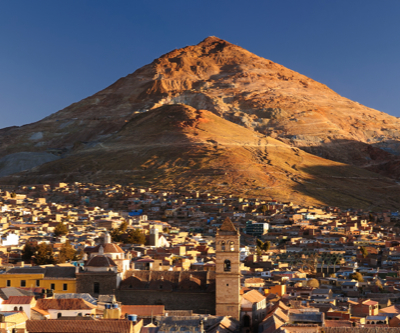
The Spanish may not have found El Dorado, the city of gold, but they certainly hit the jackpot when they landed in the Bolivian city of Potosi, home to “Cerro Rico” or Rich Mountain, one of the largest silver deposit in recorded history.
But after 467 years of mining engineers are warning that the 15,800-foot monument to native slaves, who mined the mountain’s silver in brutal conditions, is pitted throughout and in danger of a catastrophic collapse.
The cone-shaped peak that once bankrolled the Spanish empire currently hosts, according to an in-depth report from The Washington Post, as many as 16,000 miners at any given moment.
They are the descendants of those slaves who mined the mountain for centuries and, unlike their colleagues in most Latin American countries, they still work under brutal conditions, using nothing more than picks, hammers, shovels and brute strength.
“I thought the working conditions were pretty shocking, coming from Europe,” said tourist Charles Newman, a 19-year-old Briton, to the Washington Post. “It’s quite humbling, actually seeing what they do on a daily basis.”
Hundreds of thousands have died over the years, as a direct result of cave-ins, overwork, hunger and disease. Many more could be vanishing soon if Bolivia’s government doesn’t do something about the safety of the place, say experts.
One of them is Nestor Rene Espinoza, who unveiled a three-year study of the mountain, also known as “The peak that eats men,” at a recent meeting of engineers and Quechua Indian co-op owners who run the mines.
“Total collapse is possible,” Espinoza told VPR. “We hope that this does not happen in Cerro Rico.”
He is suggesting to pump tons of concrete into the 60 miles of shafts that have left the mountain hollowed out like a chunk of Swiss cheese.
However, Potosi – once one of the world’s richest cities- still relies on mining and locals are not willing to lose their only source of income.
“We have to continue to work here,” told the Washington Post Zenon Guzman, 33, who began working at the mountain when he was 12. “Where are so many people going to go?”